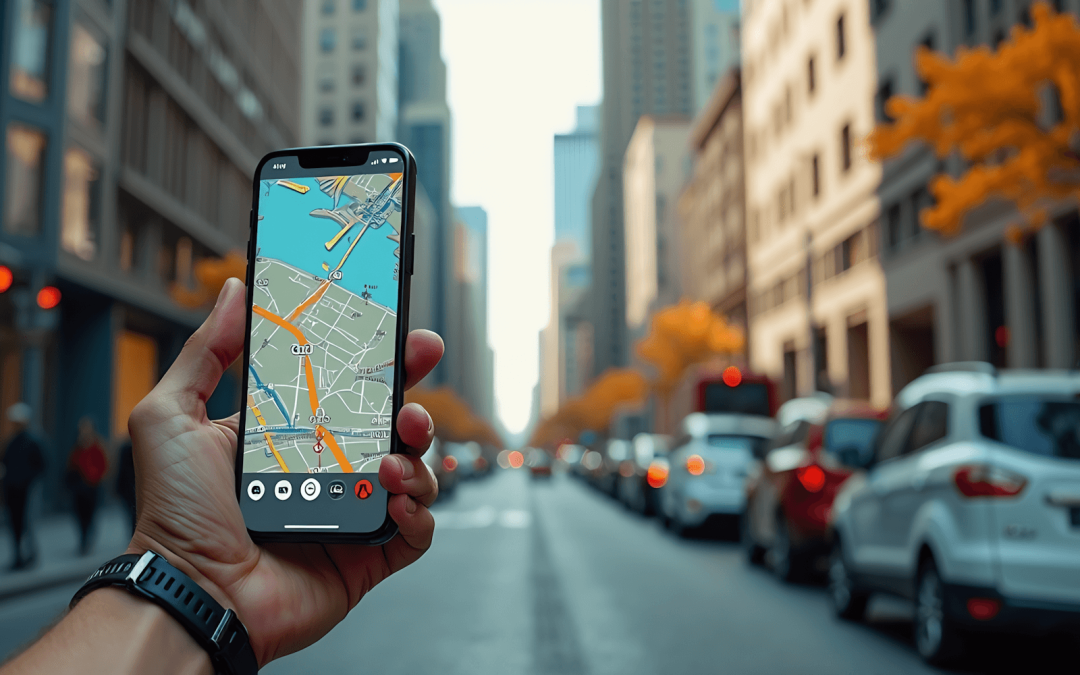Augmented Reality (AR) is rapidly reshaping the way we navigate the world, and the travel industry is no exception. By integrating digital information with real-world environments, AR navigation is making travel experiences smarter, safer, and more engaging than ever before. As AR technology continues to advance, the future of travel promises to be filled with innovative tools that enhance how we explore new destinations.
Understanding AR Navigation in Travel
AR navigation allows users to interact with their environment in real-time by overlaying digital information on physical spaces. This can include directions, points of interest, historical facts, and more, all projected onto a user’s screen, whether it’s a smartphone, tablet, or even AR glasses.
The core advantage of AR navigation is its ability to deliver context-sensitive information as travelers move through unfamiliar places, helping them make smarter decisions. Here’s how AR navigation is transforming the travel experience:
Key Features of AR Navigation
- Real-time directions: No more worrying about getting lost. AR apps provide step-by-step guidance overlaid on the actual path you’re walking, whether you’re navigating through busy cities or exploring nature trails.
- Local insights: Travel apps equipped with AR can point out attractions, restaurants, and events, providing real-time data based on your current location and preferences.
Key Advancements in AR Navigation for Travelers
1. Real-Time, Contextual Information
With AR navigation systems, travelers can access real-time data that makes exploring easier and more enjoyable. Key features include:
- Traffic updates and detours: By using AR navigation apps, travelers can receive traffic alerts and alternative routes in real-time, minimizing delays and enhancing travel efficiency.
- Weather updates: AR can display weather forecasts, enabling travelers to plan their day accordingly. If it’s about to rain, you might receive an alert suggesting nearby indoor activities.
For more on real-time navigation technology, check out this article on the future of AR in travel.
2. Immersive Virtual Tours
AR is not just about finding your way—it’s about enhancing the experience of your journey. Many AR travel apps allow users to access virtual tours of historical sites or local landmarks, even before they visit.
- Interactive storytelling: Imagine visiting a museum and seeing an AR display bring the artifacts to life. AR enriches these experiences by blending the past with the present in an interactive format.
- Pre-visit explorations: You can explore a city’s main attractions through AR apps before traveling. Virtual tours may include historical context, detailed explanations, or even guided routes, giving you a taste of the destination.
This type of immersive experience helps travelers make informed choices, enhancing their itinerary planning. To learn more about immersive travel experiences, check out this guide on AR in tourism.
3. Language Translation and Communication
Language barriers are a common challenge for travelers, but AR has made communication easier and more accessible. Here’s how:
- Instant translation: AR apps can overlay translations of foreign language signs, menus, or street names, allowing you to communicate effectively even without knowing the local language.
- Text-to-speech features: In some AR applications, users can point at a word or sentence, and the app will read it aloud in the user’s preferred language.
This feature is especially useful in areas where English may not be widely spoken. Mize Technology explores this use case in-depth, showing how AR can help break down language barriers for tourists.
4. Personalized Travel Experiences
In today’s world, travelers are looking for more than just the standard tourist experience. AR navigation technology can help create personalized, tailored itineraries based on individual interests and preferences.
- Customized recommendations: Based on the user’s browsing and travel history, AR systems can suggest the best restaurants, activities, or hidden gems in a city.
- User-centric services: From food preferences to accessibility needs, AR can adapt its services to each traveler, ensuring that every trip is unique and enjoyable.

The Impact of AR Navigation on Travel Experiences
The integration of AR technology in travel is set to revolutionize how we experience the world. Here are some of the ways AR navigation will impact travel:
- Enhanced Wayfinding: AR navigation makes it easier to get around, even in new or challenging environments. Travelers can follow clear, visual directions while also learning about the cultural or historical significance of landmarks along the way.
- Increased Engagement: AR-powered apps can transform passive sightseeing into an active, interactive experience. Whether it’s learning about a monument or participating in an AR scavenger hunt, travelers are likely to engage more deeply with their destinations.
- Improved Safety: Travelers will be able to receive real-time safety alerts and hazard warnings directly through AR navigation apps. Whether it’s a warning about dangerous weather conditions or crowded areas, AR enhances situational awareness for safer journeys.
Challenges and Considerations
While AR navigation promises many advantages, there are some challenges that need to be addressed:
1. Privacy Concerns
The use of AR technology often requires tracking personal data, such as location and preferences. Travelers need to ensure their data is kept private and secure while using AR apps. It’s essential for developers to implement robust privacy protocols to maintain user trust.
2. Technological Barriers
AR technology requires advanced devices with powerful processors, high-quality cameras, and stable internet connectivity. In certain remote destinations, travelers may not have access to the necessary technology to fully enjoy AR navigation features.
3. User Experience
For AR navigation to be widely adopted, it must be intuitive and easy to use. Complicated interfaces or laggy apps can create frustration for travelers, preventing them from fully benefiting from the technology.
The Future of AR Navigation in Travel
Looking ahead, AR navigation is only expected to improve, becoming more integrated and personalized in the coming years. Here are some developments to watch for:
- Wearable AR Devices: As AR glasses and other wearable devices become more mainstream, travelers may soon be able to access navigation systems without the need to pull out their phones.
- Smarter, More Personalized Services: AR systems will likely become more advanced in understanding traveler preferences, delivering highly tailored recommendations based on real-time behavior and interests.
- Cross-Platform Integration: The future of AR navigation will likely see apps integrating with other emerging technologies like Artificial Intelligence (AI), machine learning, and Internet of Things (IoT) devices to offer seamless multimodal navigation experiences.
For further insights into wearable AR and its applications in tourism, read more on this article on augmented reality.
Conclusion
The future of AR navigation promises to revolutionize the travel industry, enhancing the way travelers interact with their environments. As these technologies evolve, we can expect a more connected, personalized, and seamless travel experience. Whether it’s finding your way through a new city or uncovering hidden gems in a remote destination, AR navigation will make travel easier, safer, and more enjoyable.
For more exciting insights and updates on the latest in AR and travel, be sure to visit www.ARVRTravel.com.

